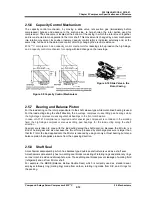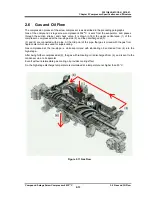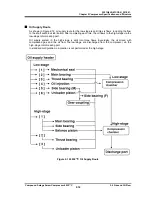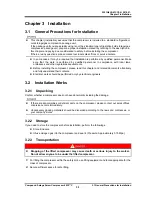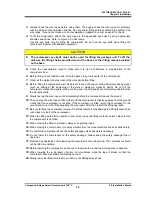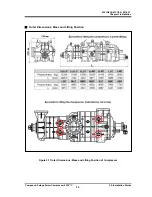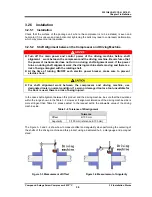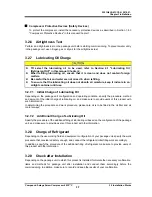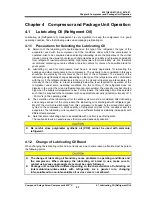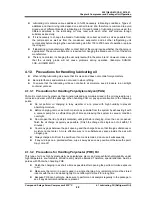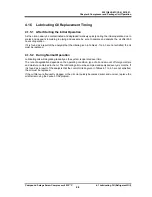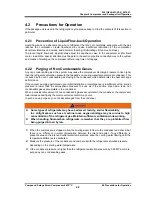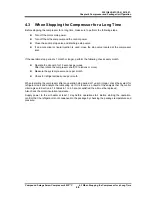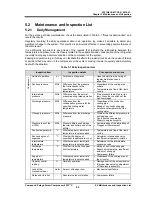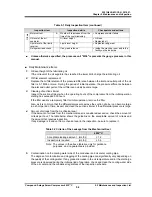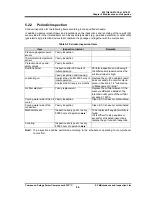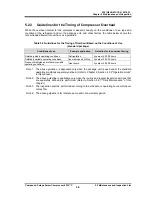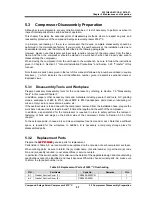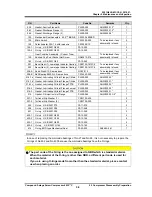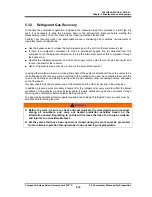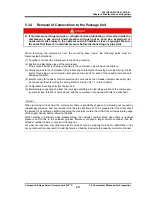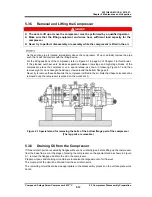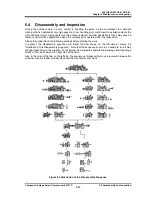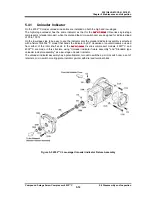
2201Q4JE-MY-C9-N_2018.01.
Chapter 4 Compressor and Package Unit Operation
Compound 2-stage Screw Compressor 4032**C
4.2 Precautions for Operation
4-5
4.2
Precautions for Operation
If the package unit is used in the refrigeration cycle, please keep in mind the contents of this section in
particular.
4.2.1 Prevention of Liquid Flow-back Operation
Liquid flow-back is a phenomenon where refrigerant that did not completely evaporate with the gas
reaches the compressor. Liquid flow-back may cause insufficient lubrication of the compressor,
abnormal vibrations and noises, and abnormal foaming of lubricating oil (too much oil loss).
To prevent liquid flow-back, appropriately adjust the expansion valve to the evaporator and/or liquid
cooler. In addition, special attention must be paid to the suction pipe line connection way to the system
and means of starting up the compressor after a long time of stoppage.
4.2.2 Purging of Non Condensable Gases
Any non condensable gas in the system may cause the compressor discharge pressure to rise higher
than the refrigerant saturation pressure that depends on cooling water temperature of condenser. This
is caused by the non condensable gas staying in the condenser which deteriorates the heat exchange
performance.
If the vacuum pumping performed upon initial installation or maintenance is insufficient or the suction
pressure is lower than the atmospheric pressure to suck air if the suction pipe had a leak, non
condensable gases accumulate in the condenser.
When a considerable amount of non condensable gases accumulate in the condenser, the compressor
load increases and finally the motor overcurrent alarm may occur.
In such a case, purge any non condensable gas from the condenser.
Some types of refrigerants may have bad smell, toxicity, and/or flammability.
In a airtight space such as a machine room, oxygen shortage may occur due to high
concentration of the refrigerant gas. Maintain sufficient ventilation while working.
When handling fluorocarbon refrigerants, remember that they are prohibited from
being purged into air by law.
1.
When the compressor is stopped, allow the cooling water to flow to the condenser and check that
there is no difference in water temperature between the inlet and outlet. If any difference is
present between the inlet and outlet water temperatures, keep the cooling water flowing until the
temperature difference is eliminated.
2.
Measure the pressure of the condenser and compare it with the refrigerant saturation pressure
depending on the cooling water temperature.
3.
If the condenser pressure is higher than the refrigerant saturation pressure by 0.05 MPa or more,
purge any non condensable gases.

